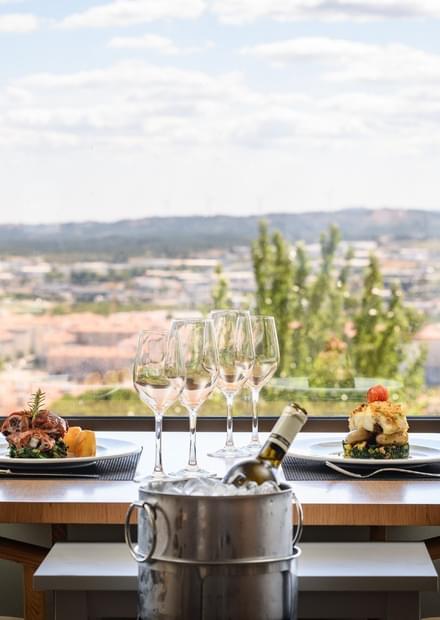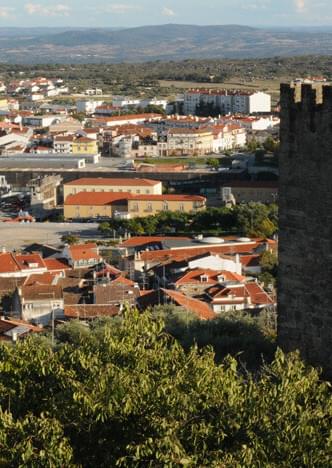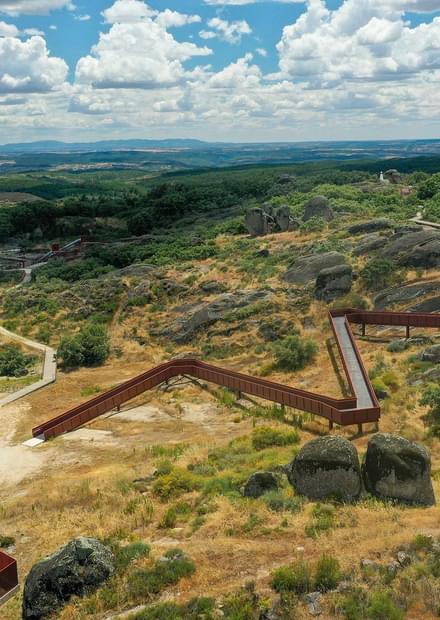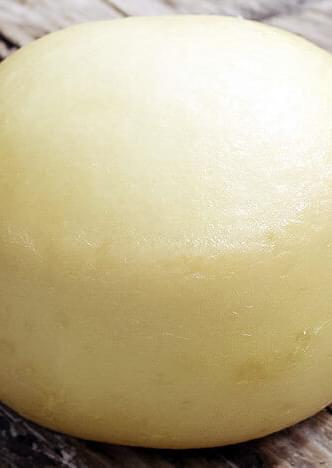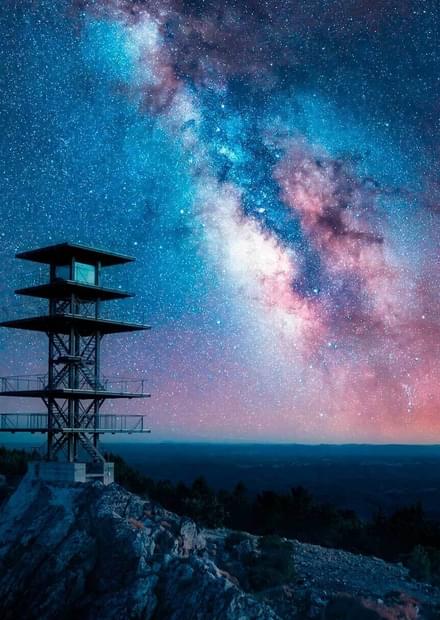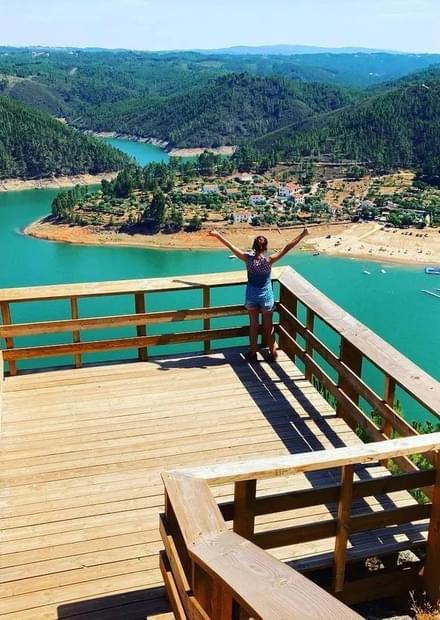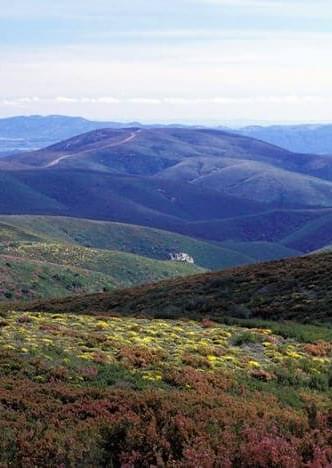Castelo Branco

Easily reachable by highway or by train, only 2 hours away from Lisbon Airport, the inland city of Castelo Branco is an hidden gem of historical and cultural heritage. A place of magical gardens, genius masters of contemporary painting and colourful embroideries. At the heart of a flawless nature and endless inspiring landscapes. In the surroundings of Castelo Branco, don't miss the chance to explore the eye-catching Natural Park of Tejo Internacional or the unique Historical Villages of Idanha-a-Velha and Monsanto. A true time travel !
Time travel
Little is known about the History of Castelo Branco prior to the arrival of the Knights Templar. The foundation of the urban areas is attributed to the Knights Templar who might also have been responsible for building the castle and its walls between 1214 and 1230.
The city’s old town still keeps memories from medieval times engraved into the stones of the wall which was later enlarged by order of King D. Dinis. During the reign of King Manuel, Castelo Branco was granted a new charter and both the population and the city’s urban space increased.
Nowadays, the streets still proudly show 15th century houses with decorated doors and windows, a symbol of the wealth of traders who lived in them. Throughout the following years, Castelo Branco received the title of outstanding town and two of its most important churches, the Misericórdia and São Miguel churches, so richly decorated they are worth a long visit, were built. Nowadays the São Miguel church is the city’s Cathedral. Later, D. Nuno de Noronha ordered the lavish Bishop's Palace to be built and it became the symbol of Castelo Branco’s urbanity and importance during this period.
Written on the floor, on the walls & touched by magic
The city of Castelo Branco shows its visitors truly outstanding examples of the typical Portuguese pavement, "calçada". All the ornamental elements depicted in the amazing embroideries of Castelo Branco can be seen on the floor of its streets. If you look up, you will marvel at the unrivalled paintings of Cargaleiro, a living legend of Portuguese culture that can be seen at the centrally located Cargaleiro Museum. As its delicate embroideries. the story of Castelo Branco is woven with delicate hands.
A magical garden
No visit to Castelo Branco is fully complete without strolling along the lavish Garden of the Bishop's Palace that soon became an iconic postcard of the city. This is certainly one of the most fascinating gardens of the whole region Center of Portugal !
An outstanding example of the Baroque style, this dazzling garden, built in the beginning of the 18th century, is rectangular in shape. It is dominated by balconies and verandas with iron guards and stone balusters. It has five lakes with ornamented edges upon on which are mounted sets of water.
The Steps of the Kings are particularly striking, whose granite statues are chronologically arranged. On the other hand, the statues of the kings who governed Portugal under Spanish rule, from 1580 to 1640, are smaller than those of the other kings.
The vast City Park - embracing an area of 18.153 square meters - is connected to this garden. The City Park was built in the beginning of the 20th century and it is also known as the Laurel Garden. A green city by all means!
A genius named Cargaleiro
On your trip to the inviting city of Castelo Branco, you must visit Cargaleiro Museum, devoted to one of Portugal’s top artists. Born in the region in Castelo Branco, namely in Vila Velha de Ródão, Manuel Cargaleiro has proved to be a creative genius of painting and ceramics.
The museum consists of two buildings: an 18th century manor house that includes the works of Cargaleiro, the collector, and a new 3-storey building that presents the works of Cargaleiro, the artist. A must-see museum!
From Castelo Branco with love
Handmade with love, the embroideries of Castelo Branco are a true symbol of the richness of the Portuguese History, a melting pot of the most remote influences. They are also a powerful way to understand the city of Castelo Branco and its identity, woven by the delicate hands of talented women.
The embroidery of Castelo Branco is the example par excellence of the taste for naturalist representation. A diversified flora is a recurrent theme.
The representation of flora is immense and in such a variety of ways that sometimes it is very hard to assess its meaning, because it is deeply stylized and complex, even suggesting an overlapping of species.
Housed in one of the most iconic buildings of the city - Domus Municipalis - the Interpretation Centre of the Embroideries of Castelo Branco is a museum, a shop and also an embroidery school, where visitors can watch the whole embroidery process. A place that pays homage to this unique tradition with its eyes on the future.
Designing the future
Castelo Branco is a deeply rich city in terms of cultural heritage. It is the home of countless inspiring landmarks, such as: the Knights' Templar Castle, the Cathedral (former St Michael's Church), Cine-Teatro Avenida, designed in the 50's by the architects Raul César Caldeira and Albertino Crujeiro Galvão Roxo, Francisco Tavares Proença Júnior Museum and Cargaleiro Museum.
But this is also a city with eyes on the future. The Centre for Contemporary Culture is a great icon of Castelo Branco. Designed by Barcelona-based architect Josep Lluis Mateo and Portuguese architect Carlos Reis de Figueiredo, this 4-floor building features the most challenging exhibitions and it is a must-see spot of this inviting city!
Largo da Devesa, also designed by Catalan architect Josep Lluis Mateo, is the new meeting point of the city. An impressive spot where locals and visitors can find welcoming cafés and shops. The place where the city movida takes place.
Culture plays a major role in Castelo Branco. This is why a former textile factory was concerted in a major cultural centre. Fábrica da Criatividade - Creativity Factory - is the place where several arts mingle and interact: theatre, dance, music, cinema, video, television, design, graphic arts, photography and architecture. A powerful centre of cultural creation !
How to get to Castelo Branco
Articles about Castelo Branco

Eating in Castelo Branco

Embroideries of Castelo Branco

Cycling in Castelo Branco


